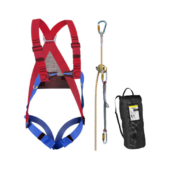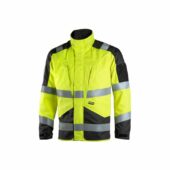It appears simple: A corporation needs something, and the procurement department finds and buys it. Strategic and intelligent procurement processes make the difference between firm survival and success.
Companies that want to flourish in an uncertain macro environment must manage their vendor-related spend strategically through intelligent procurement.
In an uncertain future, organisations should prioritise intelligent procurement to decrease costs, reduce inefficiencies, and mitigate risk.
Procurement
A corporation procures supplies and services to conduct its business.
Two basic purchase methods exist: direct and indirect. These comprise most company purchases. Strategic direct and indirect procurement and transparent organisational spend oversight are needed.
What are procurement types?
Direct procurement: According to GEP, direct procurement is “the process of obtaining raw materials, resources, goods and services that are utilised in the core operations of a business.” If you run an ice cream shop, direct procurement would include ice cream and cones. Companies optimise direct procurement by carefully identifying dependable and cost-effective vendors, automating frequently used purchases, and buying in bulk to get the lowest unit price.
Indirect procurement: At that ice cream shop, freezers, air conditioning, and email marketing software would be indirect procurement, according to SutiSoft. McKinsey states that “most companies do not have mechanisms to monitor indirect categories and reflect their performance on financial statements.” Without knowing where people and departments are spending money, companies cannot regulate and reduce it. For indirect procurement to work, procurement teams need organization-wide spend visibility.
What procurement isn’t
Procurement should not be confused with “sourcing” or “purchasing.” Each part of procurement is separate. In a holistic intelligent procurement process, sourcing and purchasing work well.
Purchasing vs. sourcing
Procurement includes sourcing. This is the supplier or vendor selection procedure. Sourcing involves finding a product or service to fit a company need, evaluating vendors, and comparing pricing. The ultimate purpose of sourcing is to minimise purchase expenses to maximise ROI.
Intelligent procurement avoids departmental repeat purchases, centralises sourcing activities, and automatically compares vendor costs, making sourcing most effective. Intelligent procurement relies on strategic sourcing to find cost-saving and risk-reducing options. Software from Order.co lets firms source strategically.
Purchasing vs. procurement
Buying goods and services for your organisation is another part of procurement. It’s not a formal process or regulation like procurement. Without a comprehensive procurement plan, purchasing can increase costs and inefficiencies. Impulsive purchases by employees without cost comparisons or due scrutiny can cause cash leaks, data security breaches, and business-continuity interruptions.
Purchasing is most effective and regulated with intelligent procurement, like sourcing. Order.co simplifies chaotic purchasing, manages staff spending, and improves the purchase experience for everyone. To achieve 93% faster ordering and complete spend compliance, BLANKSPACES used Order.co’s one catalogue and cart for all company shopping.
Sourcing + buying = procurement
Procurement involves sourcing and buying. Thomasnet.com defines strategic procurement as a “all-encompassing strategic array of processes that includes both purchasing and sourcing.” Strategic sourcing and controlled spend mitigate some of the risks of sourcing or purchasing alone.
Procurement can be simple. It combines several crucial steps:
- Business-wide spend evaluation
- Finding cost-cutting opportunities
- Controlling future purchases with policies
- Creating an approval system
- Vendor selection policy implementation
Companies who accomplish these stages are on their path to smart procurement. Intelligent procurement improves sourcing, purchasing, risk mitigation, and cost reduction.
Intelligent procurement
Companies manage all vendor-related spend in one digital place using intelligent procurement to get a holistic view. Intelligent procurement helps companies track and manage their spending.
Digital transformation has expedited intelligent procurement by using software and automation to cut costs and risks with minimum human monitoring. Order.co, an intelligent procurement platform, connects businesses to thousands of vendors, reduces rogue spending, streamlines invoice management, automates ordering, and more.
Intelligent procurement reduces supply-chain risk and helps organisations become sustainable.
Transparent, holistic spend insight simplifies procurement. Knowing where and how the company spends money helps procurement departments save expenses, make decisions, and spot issues. The outcome of greater organisational spend control? Better efficiency, cheaper expenses, and less risk.
Most firms lack an intelligent, targeted procurement strategy, to their peril. Spending in silos causes confusion, inefficiency, and unnecessary costs for most firms.
Why does intelligent procurement matter?
The key benefit of intelligent procurement is cost savings. Intelligent procurement has several benefits beyond this. Intelligent procurement reduces supply-chain risk and helps organisations become more sustainable when used intelligently.
Smart procurement saves firms money
As the centre of corporate spending, procurement is a huge cost centre. Smarter spending management offers several benefits. Intelligent procurement boosts profits.
Intelligent procurement also protects businesses from macro trends and events that cause unpredictability. McKinsey says organisations with strong procurement departments recover faster from economic downturns. Successful organisations respond to supply-chain disruptions, automate costs, and make more flexible business decisions using digital analytics.
Procurement leaders at The Future of Customer Engagement and Experience write that firms should prepare for unanticipated events, as the past 10 months have shown: “The solution is not planning for every possible contingency. How could we? Gaining visibility into your systems increases efficiency and flexibility, creating resilience.
Intelligent buying reduces supply-chain risk.
The procurement department must manage supply chains. Intelligent procurement can maintain business continuity during supply chain disruptions.
Risk is inherent in supply systems. McKinsey says “today’s complex and long supply chains are almost inevitably subject to disruption.” Trade conflicts, natural disasters, human error, and shortages like the COVID-19 epidemic trigger these disruptions. Because every supply chain has several linkages, even one disruption causes a domino effect of difficulties and costly delays.
Intelligent procurement creates a safe, efficient supply chain
Companies require a holistic view of their spend and vendors to identify supply sources and respond during disruptions to reduce risk. Transparent procurement platforms like Order.co allow procurement teams to act quickly when business continuity is threatened.
Intelligent procurement protects businesses from macro trends and events that cause unpredictability.
Intelligent procurement technologies help organisations to quickly locate and cost-compare new or replacement vendors to avoid high expenditures during unanticipated issues. Order.co’s intelligent procurement system connects organisations to thousands of vendors and automatically sources out-of-stock or lost items from comparable sellers at comparable rates, assuring business continuity during disruptions.
Intelligent procurement tools track delivery, helping organisations spot delays and fix problems faster.
Sustainable procurement is possible with intelligent procurement.
Intelligent procurement is more likely to lead to sustainable procurement, which ensures that “your suppliers—and your suppliers’ suppliers—are proactively seeking ways to minimise waste and reduce their carbon footprint.”
According to IBM research, 62% of consumers would adjust their purchase patterns to support more sustainable enterprises, making sustainable procurement crucial. Companies cannot afford to be unsustainable. Short-term savings may cost organisations income if discriminating customers and investors leave.
Sixty-two percent of shoppers would switch to sustainable brands.
Companies can improve sustainability by procuring long-term. When business leaders draw from and practise sustainability, they show their values to critical stakeholders.
How intelligent procurement aids sustainable procurement
Using procurement tools to find and compare sustainable vendors helps companies accomplish sustainable buying. An intelligent procurement system gives firms holistic visibility into their spend, identifies sustainable vendors, and tracks that information in one place so they can more easily source and purchase from them.
Sustainable procurement illustrates the need for intelligent procurement technologies and intelligent procurement department staff to operate together. Individual employees can use intelligent procurement platforms to make department-wide policy decisions that boost a company’s reputation, creating value beyond dollars and cents.
How to buy smart
An intelligent procurement process has multiple parts. To achieve it, procurement leaders must:
Implement an efficient procurement process.
Strategic planning is needed for smart buying. Leaders require a procurement strategy to reduce risk and save money on corporate supplies. They then need a repeatable procurement process.
Why is a good procurement strategy and process important?
Procurement is risky. Procurement departments must use third parties they cannot control. Without a good procurement plan, procurement staff frequently fight little fires, such as recurring purchases by former employees or duplicate purchases by multiple departments. They may deal with unreliable, noncompliant, or expensive vendors. Employee maverick spending may be regularly monitored. Undoubtedly, they will spend more team members’ time on inefficient manual operations.
A strategy and approach reduce these risks. Effective strategies organise information, streamline billing, and create a transparent expenditure management environment, making the department work more smoothly. Perhaps most crucially, a good procurement strategy creates a lean operating model that reduces ad hoc spending.
Effective procurement plan creation
The procurement department must first identify all organisational spending sources. Spend management software like Order.co helps firms centralise their expenditure sources to identify and analyse departmental spend.
Once procurement departments identify organisational spend sources, they may better predict and cut future expenses. Order.co’s software automatically compares vendor costs so teams can obtain the best deal on every product and service. They can also restrict employee maverick spending and provide the procurement department more control over the organization’s cost.
Without a strategy, procurement departments constantly fight little fires.
Understanding the company’s costs and recognising risks that could raise them can help companies avoid unexpected charges. Effective procurement departments collaborate with finance teams to provide money to departments and include a cushion for unanticipated expenses.
Top procurement techniques use technology to eliminate human mistake and busywork, boosting productivity and lowering costs. Automation helps procurement strategies by comparing vendor costs, combining orders, organising information, and saving time.
Leverage procurement software and technologies
Technology is likely the most essential aspect in intelligent procurement. Procurement software automates processes and provides organization-wide spend visibility, improving productivity.
Technology and software for procurement—why?
Historically, procurement took time and manpower. Source, assess, and approve purchases, manage vendor relationships, and track bills are critical but repetitive tasks. Employees waste time and risk errors while doing these jobs manually.
Procurement technology automates most of the tedious manual tasks that wastes employees’ time. Technology eliminates human error, reducing risk.
By using procurement technology and software, companies can cut costs. Technology automatically compares vendor costs, finds duplicate or off-budget spending, and provides complete insights for real-time expenditure evaluation. A BCG study found that digital procurement tools save annual spending by 5% to 10%.
Technology is likely the most essential aspect in intelligent procurement.
The rapid rate of technical progress has given procurement teams several tools. Today’s organisations must manage spend and a distributed staff like never before. Technology and software aid.
Automated procurement processes allow procurement departments to focus on higher-value, risk-reducing tasks. Intelligent procurement uses technology’s speed and scale with humans’ instincts and knowledge to reduce risk, cost, and inefficiency.
How to choose procurement software and technologies
Procurement teams must identify their biggest difficulties before choosing the appropriate tools for the organisation. The following are common obstacles:
- Too much or too little sourcing time
- Disorganised, inefficient purchasing
- Manage multiple providers
- Combating maverick spending
- Vendor faults that threaten business continuity
Teams can more easily study and choose technologies to answer their primary difficulties after identifying them.
Most teams confront multiple challenges. Order.co can solve procurement departments’ problems without them having to buy different tools and assemble them. Among industry leaders, only Order.co can automate and improve every procurement process step, from strategic sourcing and vendor API interfaces to purchase and invoice reconciliation.
Purchasing companies must feel empowered to utilise procurement technologies to maximise ROI. Without integration with a company’s tech stack, even the best procurement technology is useless.
Before buying procurement software, procurement departments should check API compatibility with the IT team and company data-related vendor requirements with the compliance team. After confirming that their selected solution integrates properly with the company’s API and won’t breach data security standards, procurement teams should prepare to ask vendor sales teams the right questions. We designed this Decision Matrix to help procurement teams quantify their options and choose procurement technologies based on data.
Intelligent procurement is essential now and in the future.
Effective procurement in modern firms is difficult. Think With Google reports that 81% of non-executive staff can influence purchases. Distributed teams are harder to manage, and unprecedented financial instability undermines business continuity in unanticipated ways.
Most firms have siloed procurement. Organisational purchasing is disorganised, which raises expenses and puts the company at risk.
81% of nonexecutive employees can influence purchases
It’s not necessary. Procurement may help companies become leaner, more efficient, and risk-free. Forward-thinking corporations may preserve and boost their bottom lines using procurement.
Companies need smart procurement to get there. Technology is needed to streamline systems, monitor the organisation, and automate unproductive procurement tasks. Intelligent procurement allows companies to decrease costs, boost efficiency, reduce risk, and operate more sustainably.

















